- Drone manufacturers and the media have praised the promise of these systems in fighting wildlife poaching, but few data yet exist to confirm their actual success.
- This piece identifies different categories of unmanned aircraft systems (UAS), with the caveat that “you get what you pay for”.
- Defining your team’s mission is the first challenge in deploying drones, or any technology, for conservation and research.
No piece of conservation hardware has received more attention in the media than drones, a.k.a. Unmanned Aircraft Systems (UAS) or Unmanned Aerial Vehicles (UAV), yet there is disagreement about their applicability to various conservation applications. The use of drones for enhancing anti-poaching is perhaps the most controversial application, with little empirical data to back some of the media claims and hopeful speculation.
To provide some background and to help demystify the potential of drones to help monitor, study, and conserve wildlife and habitats, wildtech.mongabay.com has invited a recognized expert in the field, Dr. Nir Tenenbaum, the Director of Wildeas. Nir, a trained veterinarian, served in the Israeli air force and defense industry for over 15 years and since has been active advising conservationists in the surveillance and anti-poaching arena.
This post provides less familiar readers with a brief history of drones and theory behind their use for anti-poaching. One of the key findings of a survey Nir conducted of the industry and the needs of conservationists is that one size does not fit all. A second post will identify some infrequently asked questions about drones in conservation and provide the specifications of several tiers of UAS—from those slightly more advanced than off-the-shelf hobby devices to military grade.
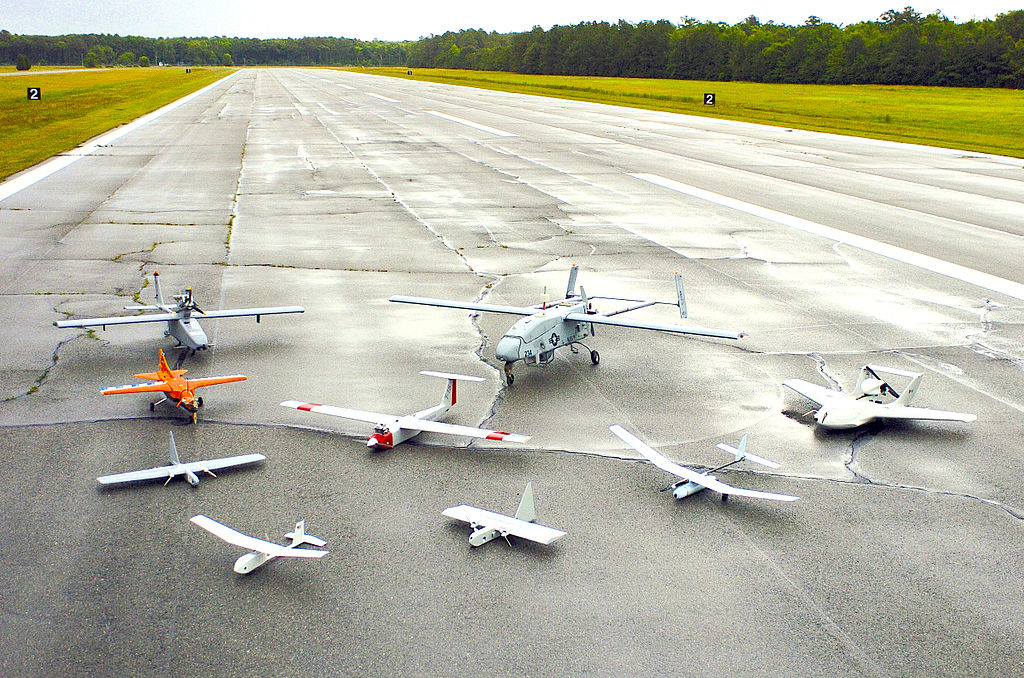
Part 1 History, Theory, and Practice
Introduction
Just a decade ago, drones—technically known as Unmanned Aerial Systems (UAS)—were mysterious devices used by military forces to conduct covert aerial intelligence and surveillance missions formerly limited to manned aircraft. In the military, drones have served and continue to function as expandable devices, known in the industry as “platforms”, for undesirable missions denoted as “the dull, the dirty and the dangerous”. However, until recently, drones rarely made it to the mainstream news or sparked widespread public interest and concern.
Several trends have converged in recent years to introduce UAS to a wider range of civilian users. Chief among these changes was awareness. Since the 1970s, there has been a steady increase in the number of UAS-related publications. Recent partial success of UAVs in anti-terrorism missions has brought them even more into the public eye.
At the same time, the increased availability of information on the Internet gave people everywhere the ability to learn about, discuss, and access technology that was until recently deemed “for professionals only”. The same time period has seen increased availability of hardware and software, with easier access to open-source, low-cost materials and components.
With the proliferation of open-source autopilots and the dropping prices for sensors, many companies have jumped to incorporate UAS’s into their business. These range from delivery of goods by big players such as Google and Amazon.com, to security services, surveyors, inspectors, farmers, photographers and film makers. In just the last few years, UAS have begun to pop up in conservation activities.
UAS’s in nature conservation
The dramatic increase in forest destruction and wildlife poaching has encouraged wildlife scientists and conservationists to explore the potential for using drones in surveillance and anti-poaching activities. For many years, the conservation world has lagged behind other sectors technologically – devoting tight budgets to immediate needs like putting boots and vehicles on the ground left no funding to explore and introduce advanced tools to improve wildlife management.
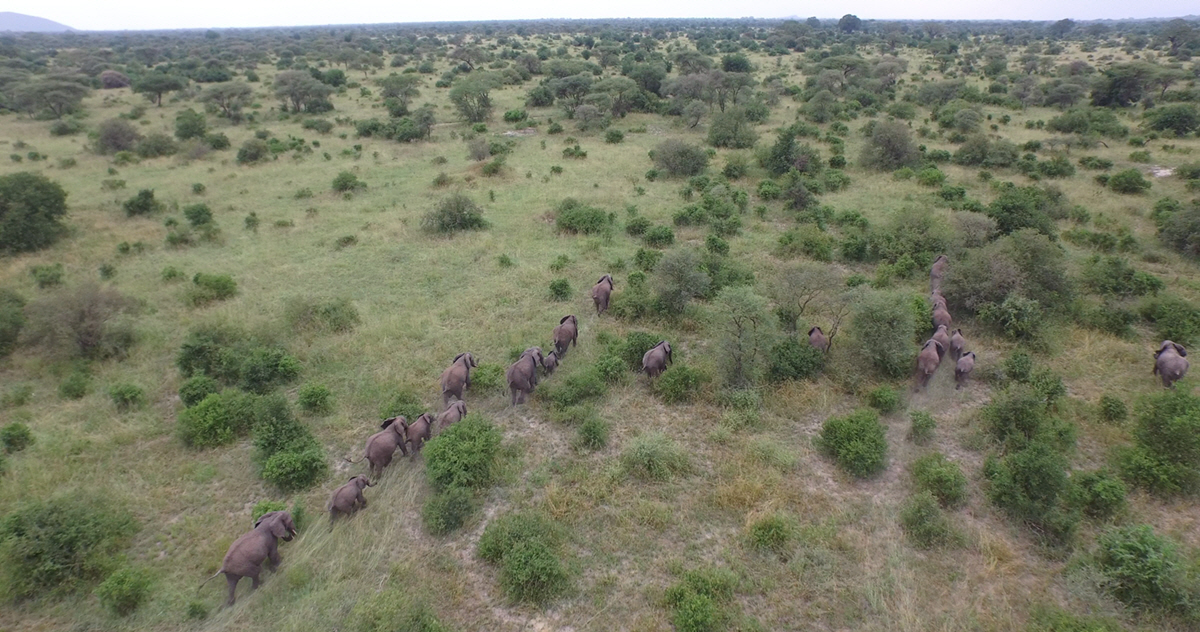
Optimism about the potential of a commercial/civilian UAS market attracted many new researchers and manufacturers to the field, ranging from novice entrepreneurs to university teams, and veteran defense contractors. However, the interest among manufacturers in this market differs from that of potential consumers in concept and practice. Manufacturers offer a variety of solutions but focus on developing and ultimately selling their products. As potential consumers, conservation and anti-poaching forces need to be aware of a seller’s main interests.
When UAS technology was introduced, conservation groups tended to compare all UAS systems according to similar criteria and requirements, rather than choose a UAS defined by the group’s mission. A combination of marketing hype about UAS’s potential, given their success in military operations, and a lack of understanding of the price tag, capability, and maintenance requirements of military-grade equipment prompted some groups to invest in systems that were more affordable but could never meet their needs. Press announcements hailing the new technology as a low-budget catchall solution to wildlife and forest protection problems have not been pursued and quantified, and they have instead unfairly increased expectations for those inside and outside conservation circles. A gap between product and need has created a trail of underused or unsuccessful technologies, wasting valuable time and seeding a disillusionment with drones and particularly of advanced defense solutions to the poaching problem generally.
Despite the rocky start to applying UAS’s to conservation work, drones are now expected to play greater roles in the countless challenges faced by the conservation community. These roles include assisting daily park management in monitoring animals and natural habitats, mapping, surveying, resolving human-wildlife conflict, managing food and water resources, providing passive and active protection, and much more.
Knowing the mission
A key point for potential UAS customers and users, therefore, is to identify the mission – the types of activities and information sought — before choosing a UAS (if a UAS is needed at all). The mission itself should inform the platform and system to be deployed, rather than coercing the system to perform a mission it is not designed for. (Don’t pressure a fish to climb trees or a tree to swim!)
Drones for research and management activities such as surveying, monitoring, and mapping habitat and wildlife will tend to be of a simpler design, based on Remote-Controlled (RC) platforms, carry simple modular payloads, and have short range (< 3 km) and endurance (< 60 minutes, less for multi-copter drones). Drones for research and management are unarmed, as well as unmanned, and payloads are typically cameras and other sensors.
Drones for intelligence, surveillance, and reconnaissance (ISR) conservation missions, such as anti-poaching and protection, tend to require better reliability, durability, and performance, including carrying multiple, higher-quality payloads, providing real-time data, and having longer range and endurance. The mission characteristics will also vary by location, depending on the geographical and environmental conditions, local regulations, and manpower.
[Editor’s Note: A follow-up to this post will include questions you should ask before investing in drone technology and should also help with clarifying your mission.]
Types of Unmanned Aerial Systems
The current world of UAS’s is vast and includes a variety of categories, platforms, payloads, and capabilities. While the original categories for UAS were defined by the defense industry, new categories of systems from novice manufacturers usually stem from the archetypal RC aircrafts, using a mix of commercial and hobbyist RC platforms, off-the-shelf payloads, and open software to create a great variety in quality, platform, and cost.
The following three UAV categories illustrate the range of devices used for conservation, and highlight specific examples of their use for conservation. They range from low-cost, off-the-shelf hobbyist devices adapted to conservation missions, to more robust tools made and designed by UAS manufacturers, to high-performance military-grade systems.
1. Small, radio control-based aircrafts (RCAs). UAV hobbyists and researchers have used off-the-shelf UAVs, or built their own, and adapted them to conservation missions. The organization Conservation Drones.org has gained popularity in conservation circles, becoming a knowledge hub by assisting with the creation of a range of such low-cost platforms (fixed-wing, multi-rotor, etc.) to aid field operations. This group and others have integrated off-the-shelf components – from platform to engine, sensors, payloads, communication, autopilots, stations, and open-source software — with RCA technology to allow greater control of both platform and payload.
These drones are the simplest unmanned aerial vehicles, providing limited data and performance, so are not typically considered “systems” on their own. They have been used at fine scales to survey birds and marine mammals, inventory forests, search for illegal logging, and detect wildfires. Another common platform used because of its simple operation is the simple quadcopter UAV, such as DJI’s Phantom, which has been used to aid in addressing human-elephant conflict and conduct high-resolution habitat surveys.
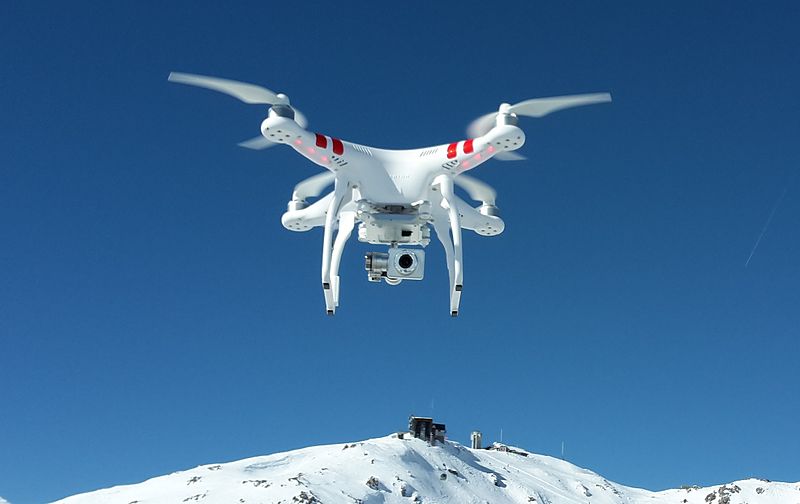
2. Commercial UAS’s new to the market. Manufacturers of UAS’s have proliferated in recent years, producing a variety of platforms of fixed-wing, single/multi-rotor, transitional flight, and other UAS categories for use in resource extraction, forestry, transportation, and other commercial activities. These new platforms have, in turn, inspired other independent manufacturers to produce complementary items, such as software, control stations, payloads, sensors, antennas, communication, autopilots, and safety equipment that work with commercial UAS. Most of these manufacturers focus on creating a product similar to small military-grade systems (<10kg) but with significantly lower costs. This commonly translates to a lower-quality build, lower-cost and lower-capability sensors and close to medium-range endurance.
Conservation workers have used these intermediate systems with some success for surveys, mapping, and as part of an immediate response to intruder presence, mostly at close range over small areas. Although these UAS’s are more complicated and capable than the simpler RCA’s mentioned above, their actual performance is still inadequate to cover large areas. These systems are improving, but to reduce costs, companies reduce the capabilities, build quality, and safety needed to achieve most ant-poaching program goals (e.g. intruder detection).
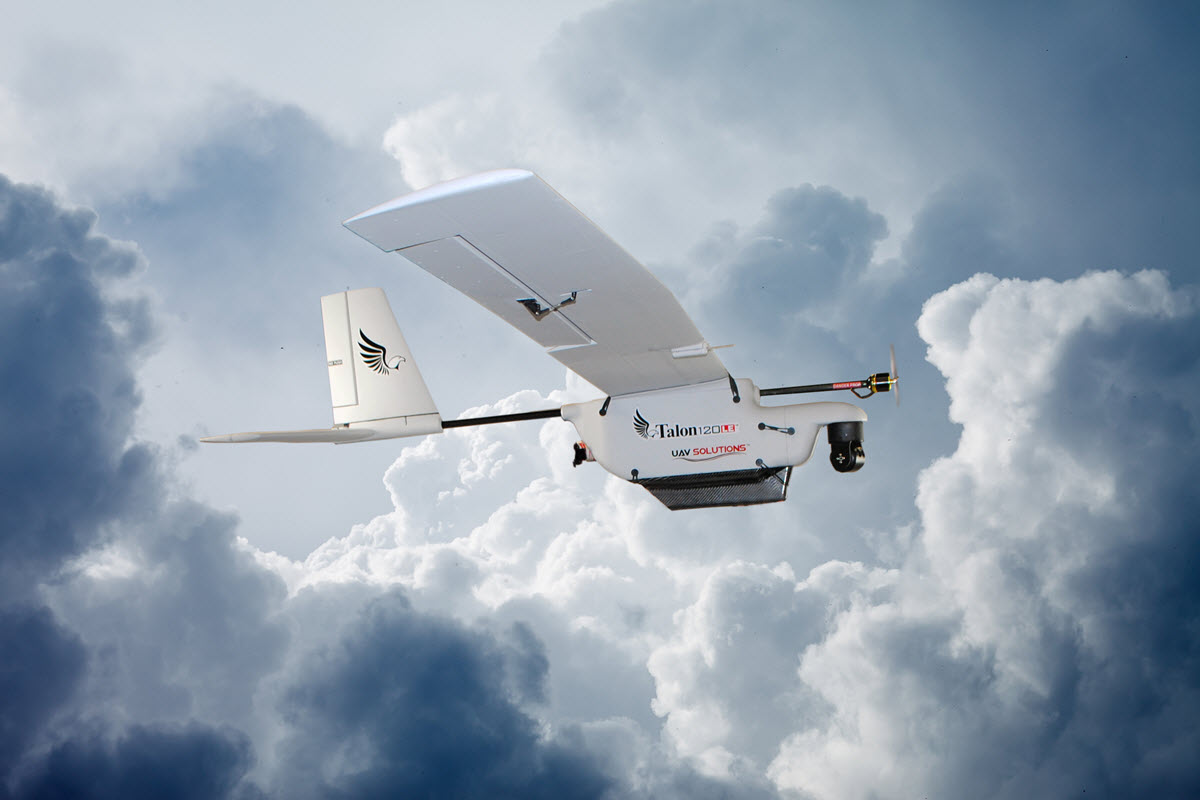
3. Military-grade systems. High-end manufacturers of UAS’s have been around for many years, creating and marketing systems designed according to military-grade specifications. Most high-end systems have published capabilities and expected lifetimes based on extensive flight hours in the field. Their durability, capacity, endurance, and safety outdo those of cheaper models – you get what you pay for – and they can provide the long-range output (e.g. faster flight, flight duration of hours, rather than minutes) more appropriate for ISR and protection missions, albeit with a significant price tag.
Unfortunately, cost remains a major hurdle with both the higher-end commercial platforms and military UAS. In the US, the National Oceanic and Atmospheric Administration and the U.S. Geological Society were able to secure the use military-grade systems donated by the US military for aerial surveys, but even these “free drones” have hidden maintenance and operation costs. Even high-quality systems may fail when they are not matched by corresponding field capabilities, needs, maintenance and logistical support, and long-term planning for their use. Also, because these are defense-related, high-end systems and components are subject to security and export regulations, such as ITAR regulations, so using these platforms outside the U.S. is not an option without government permission.
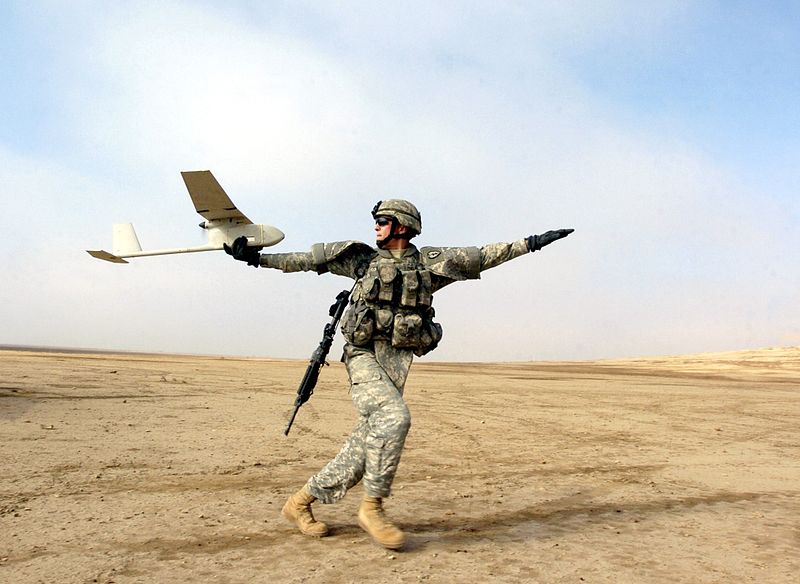
Will drones help protect endangered species?
UAS manufacturers, non-profits, and the popular media have heralded UAS as amazing tools that can solve poaching problems through their ability to fly high above a target. Hundreds of articles have been published about the potential for using drones for anti-poaching; most of these articles, although well-meaning, did not mirror any actual performance in the field. To date, no unmanned aerial solution has been applied successfully to direct anti-poaching activities – primarily because they are not selected, used, and deployed correctly for this role.
There remains a great deal of misunderstanding about the actual performance of UAS’s and their adaptability to the needs of the conservation community. Aerial platforms are not simple, and in order for them to make a real difference, their deployment must consider both the manufacturers’ goals and conservation realities (low budgets, limited battery charging capability, inexperienced personnel, poor capacity to use and maintain UAS’s, and immediate species protection needs).
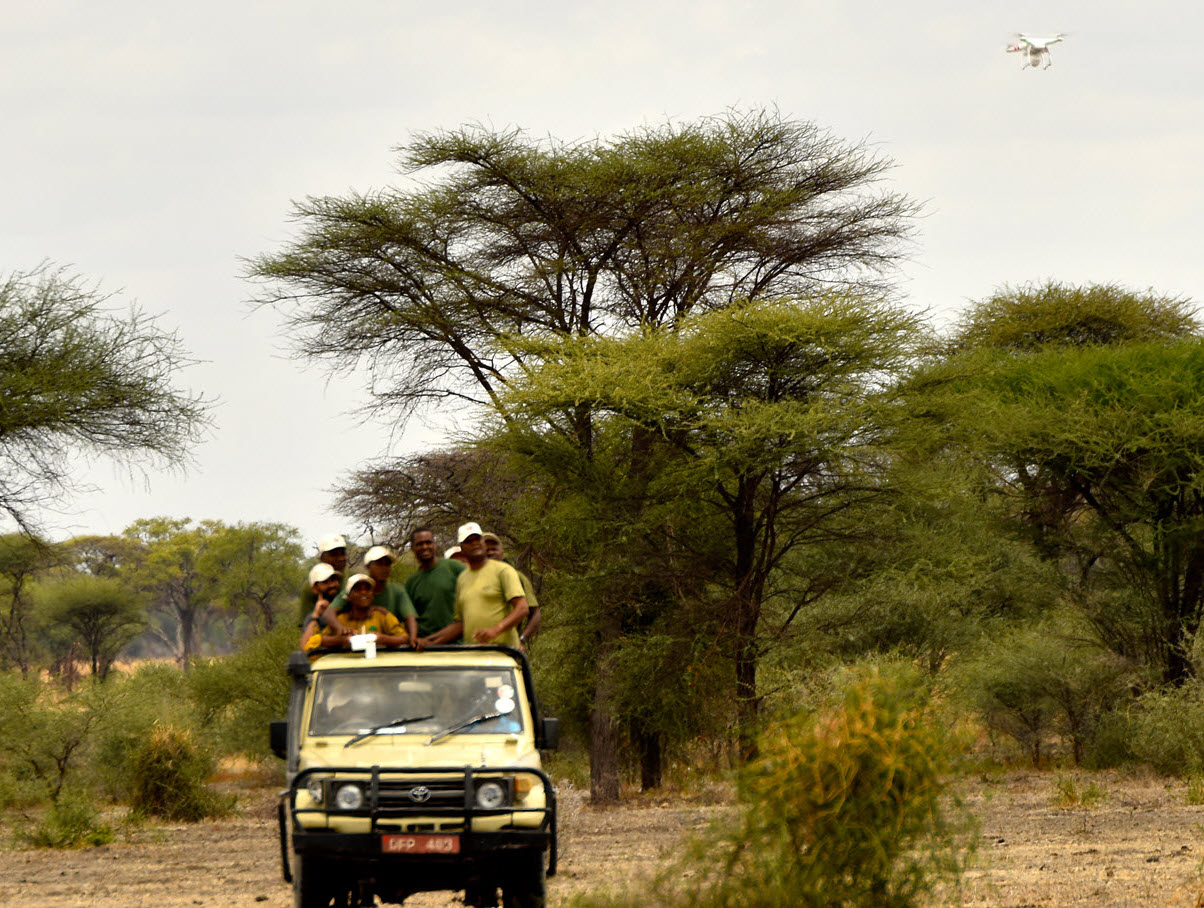
Researchers have had success applying drones to relatively simple, small-scale, straightforward missions, particularly those that do not require real-time information, such as mapping food and water sources for wildlife, surveying nests and colonies, and monitoring changes in vegetation coverage over a limited area. These successful applications support the continued exploration of UAS’s as conservation tools, but with an eye toward more critical assessments of UAS’s meant for species protection work.
Learn more about UAS’s (short list to get you started):
- Wildeas.org: UAS 101
- DIYDrones.org: A newbie’s guide
- ConservationDrones.org: Examples of conservation applications
| “Drone Speak” – A Glossary UAS – Unmanned Aircraft System: The coordinated set of modules, including the aerial semi- or fully autonomous vehicle(s), payloads, ground control and communication station, predesignated by the manufacturer to act as a complete operational unit or system.
UAV – Unmanned Aerial Vehicle: Commonly and mistakenly known as a drone, the UAV is actually a remotely piloted aircraft (RPA) – an advanced semi- or fully autonomous powered aircraft that does not carry a human operator and is operated/controlled from the ground via its autopilot mechanism. The UAV is the backbone of any UAS and carries all payloads and equipment required to perform its flight, mission and communication. The UAV can be preprogrammed for flight and payload operations prior to launch (Non Real-time) or during flight (Real-time). Platform: A simple term used by professionals when referring to the aerial component of the UAS (“the bird”) – commonly referring to the aerial vessel providing lift, carrying all components necessary for flight and mission. Payload: Equipment carried by the UAV that is utilized to perform a mission and not directly related to flight, control or navigation (i.e. camera, sensors for detection). Fixed-wing: A term used to describe UAV’s with a permanent wing assembly, requiring continual forward motion (i.e. cannot hover). It commonly provides longer endurance and higher payload capacity. Multi rotor (copter): A term used to describe UAVs that use multiple rotors to provide both vertical lift and horizontal motion. These rotors similar to single rotor helicopters, allow the UAV to hover and provide simpler operation and stable images. Commonly used for shorter endurance and range. Gimbal: A pivoted support that allows the rotation of an object (a UAV’s payload) on at least one (often 3) designated axis, independent from its support (the platform). Real-time system: Transmits data, such as video or other remotely sensed data, immediately from the UAV to the operator – allowing real-time search, detection and response. RC/RCA – Radio Controlled Aircraft: Based on hobbyist level platforms, RCA’s are small, operator-directly-controlled aircrafts that can at times include basic semi-autonomous capabilities and carry small payloads. RCA’s lack higher autonomous capabilities, operational oriented design, automatic backup, or safety systems. |
